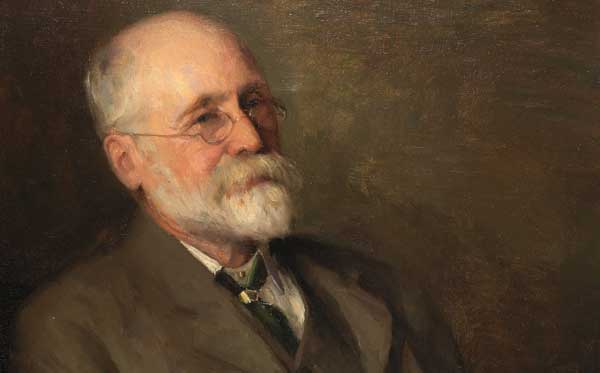
 Ahead of the launch of his new biography of Joseph Rowntree on Saturday, Chris Titley guides us round the city he knew so well
Ahead of the launch of his new biography of Joseph Rowntree on Saturday, Chris Titley guides us round the city he knew so well
Street theatre epic Blood + Chocolate is a sell out. You can’t get a ticket for blood nor money. Or chocolate come to that.
But what about the man who inspired it all? The production hinges on the story of how Rowntree’s made special tins of chocolate, sent to every York soldier at the front at Christmas 1914.
Joseph Rowntree, a Quaker and pacifist, was chairman of Rowntree & Co. And his story can be told through some of the buildings of York. Here are a few of the major landmarks of Joseph Rowntree’s life.
Pavement shop
Joseph’s boyhood home was above the family shop at 28 Pavement. The Georgian fanlight and bow windows of the building can be clearly seen in this image of Pavement before it was rebuilt in about 1870.
This successful grocery store run by his father, Joseph Rowntree senior, was also home to the shop apprentices as well as Joseph and his siblings. Today, the frontage much changed, it is home to Pizza Hut.
Bootham School
Joseph attended Bootham School, a strikingly forward-thinking establishment for Victorian times. Science was very important. The school had the first ever natural history society in the country – in this picture the boys are off on a nature trip.
Top House
In the 1850s Joseph Rowntree Senior, young Joseph and the rest of family moved to a purpose-built home. It was known as Top House, being situated at the top of the road at the junction of St Mary’s and Bootham. It meant Joseph junior only had a short walk to his school for the last of his days in the classroom.
Later he moved into specially created private quarters in Top House with his first wife Julia.
Friends Meeting House
The largest Quaker place of worship in York was the Friends Meeting House on Friargate. It has been completely rebuilt since Joseph attended regular meetings here, but some of the cast-iron columns of the 18th-century building were incorporated into the modern design.
Tanner’s Moat
The Rowntree cocoa works began life in a ramshackle collection of buildings at Tanner’s Moat. Joseph left the successful family grocery shop to join brother Henry Isaac at what was then a struggling business. There must have been moments when Joseph wondered if he’d made the right decision (especially when the works flooded…)
Haxby Road
In 1890 Joseph Rowntree bought 29 acres of land off Haxby Road. It was a clean slate, a chance to create a modern, industrial works.
Joseph wanted his factory to be about more than products and profit. Soon workers were encouraged to take part in a raft of social pursuits, including dance classes and tennis – a Rowntree family interest.
Clifton Lodge
Joseph’s final home was Clifton Lodge. He moved in in 1905, a little over 50 years after the 16-room house was built. The buildings were situated close to Homestead Park, the grounds of the Arts-and-Crafts home that son Seebohm had built for himself around the same time.
Although this was private land it was often opened to schoolchildren in the summer holidays and played host to community events. Today the park is open to the public.
Joseph continued to live at Clifton Lodge after the death of his second wife of 57 years, Antoinette, in November 1924. Joseph died here a few months later, on February 24, 1925. He was 88.
- Joseph Rowntree by Chris Titley, published by Shire in association with the Rowntree Society, is priced £6.99. It is available from Janette Ray’s bookshop, or through the Rowntree Society website (PDF)
- Join Chris at his book signing at Janette Ray’s Bookshop on Bootham between 2.30pm and 5.30pm on Saturday, October 12







